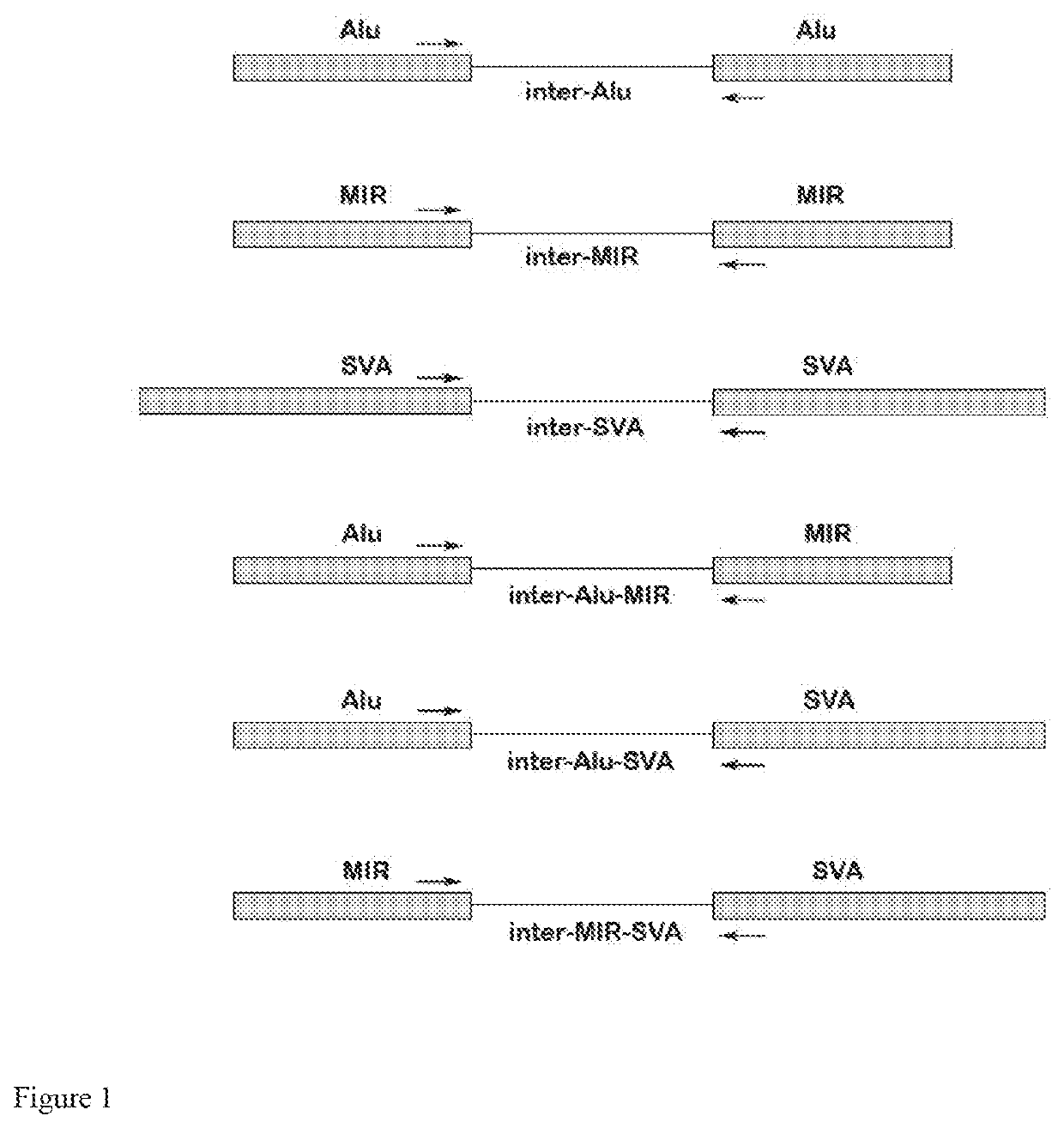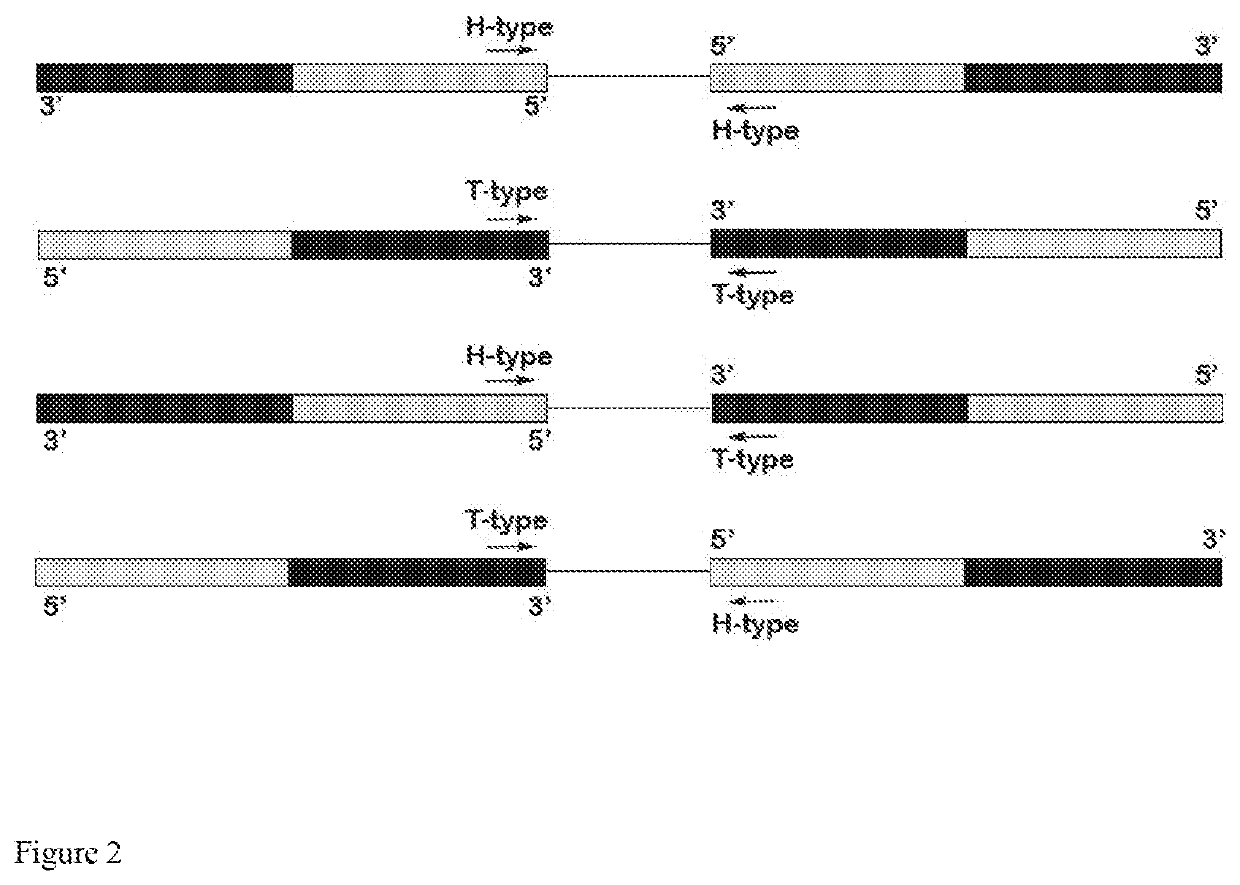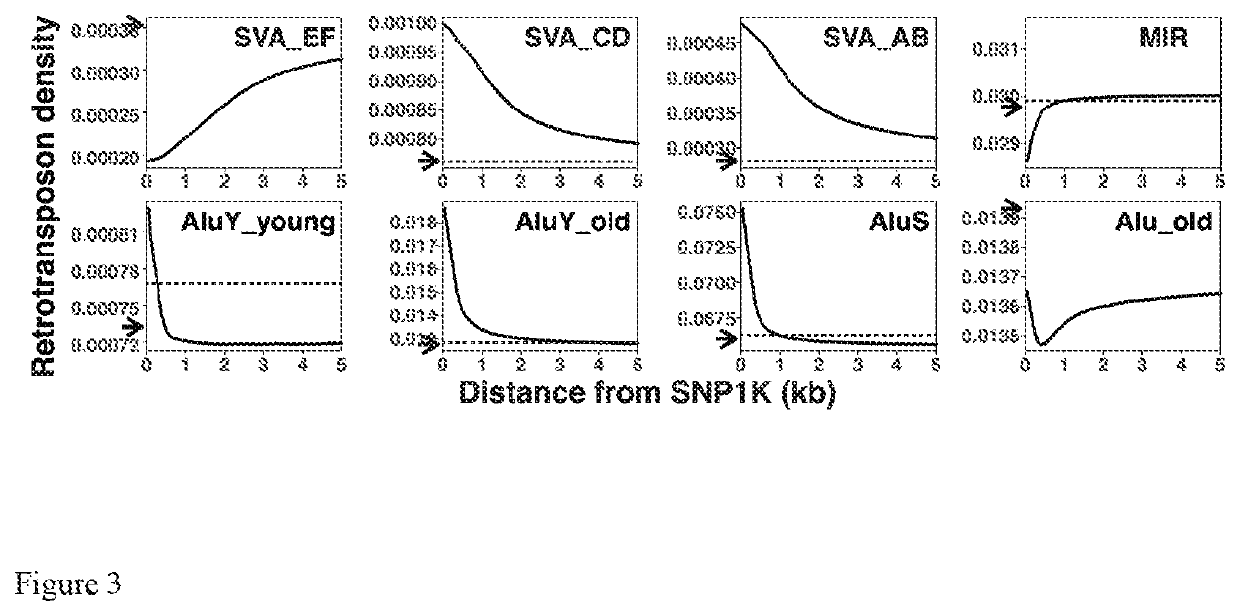Genome-wide capture of inter-transposable element segments for genomic sequence analysis of human DNA samples with microbial contamination
a technology of inter-transposable elements and genomic sequence analysis, which is applied in the field of genome-wide capture of inter-transposable element segments for genomic sequence analysis of human dna samples with microbial contamination, can solve the problems of difficult analysis of these dnas, the inability to fully meet the stringent requirements of whole-genome sequencing, and the inability to use even 3 micrograms of genomic dna for analysis. achieve the effect of high yield
- Summary
- Abstract
- Description
- Claims
- Application Information
AI Technical Summary
Benefits of technology
Problems solved by technology
Method used
Image
Examples
example 1
[0176]Relative locations of single nucleotide polymorphisms (SNPs) and Alu, MIR and SVA retrotranposons. To examine the possible correlations between the Alu, MIR and SVA retrotransposons and SNPs, the locations of these retrotransposons from UC SC table browser RepeatMasker track for human assembly hg19 (Smit et al 2010) were compared to the locations of entries in SNP1K database. The graphs in FIG. 3 and the summary in FIG. 9 show that the densities of SVA_CD and SVA_AB elements at distances up to 5 kb, MIR at 1-5 kb, AluY-young at up to 0.25 kb, AluY old at up to 3.7 kb, and AluS at up to 0.95 kb from SNP1K entries are enriched to p<0.01 compared to randomized Monte Carlo simulations (n=100x) of 100M SNPs within 22 autosomes.
example 2
[0177]Relative locations of microsatellites (MSTs) and Alu, MIR and SVA retrotranposons. To examine the possible correlations between the Alu, MIR and SVA retrotransposons and MSTs, the locations of these retrotransposons from UC SC table browser RepeatMasker track for human assembly hg19 (Smit et al 2010) were compared to the locations of entries in the MST database. The graphs in FIG. 4 and the summary in FIG. 9 show that the densities of MIR elements at 1.65-5 kb, AluY old at 0.3-0.75 kb and 1.05-2.35 kb, AluS at 0.2 −5 kb, and Alu old at up to 5 kb from MST entries are enriched to p<0.01 compared to randomized Monte Carlo simulations (n=100x) of all MST entries within 22 autosomes.
example 3
[0178]Relative locations of short germline copy number variations (shortCNVs) and Alu, MIR and SVA retrotranposons. To examine the possible correlations between the Alu, MIR and SVA retrotransposons and shortCNVs, the locations of these retrotransposons from UCSC table browser RepeatMasker track for human assembly hg19 (Smit et al 2010) were compared to the locations of shortCNVG entries in the deVars database (5 bp<CNVG<158 bp). The graphs in FIG. 5 and the summary in FIG. 9 show that the densities of SVA EF, SVA CD, AluY young, AluY old, AluS and Alu old at up to 5 kb, SVA AB at 0.6-2.95 kb, and MIR at 1.4-5 kb from shortCNVG entries are enriched to p<0.01 compared to randomized Monte Carlo simulations (n=100x) of all shortCNVG entries within 22 autosomes.
PUM
| Property | Measurement | Unit |
|---|---|---|
| Fraction | aaaaa | aaaaa |
| Time | aaaaa | aaaaa |
Abstract
Description
Claims
Application Information
 Login to View More
Login to View More - R&D
- Intellectual Property
- Life Sciences
- Materials
- Tech Scout
- Unparalleled Data Quality
- Higher Quality Content
- 60% Fewer Hallucinations
Browse by: Latest US Patents, China's latest patents, Technical Efficacy Thesaurus, Application Domain, Technology Topic, Popular Technical Reports.
© 2025 PatSnap. All rights reserved.Legal|Privacy policy|Modern Slavery Act Transparency Statement|Sitemap|About US| Contact US: help@patsnap.com



